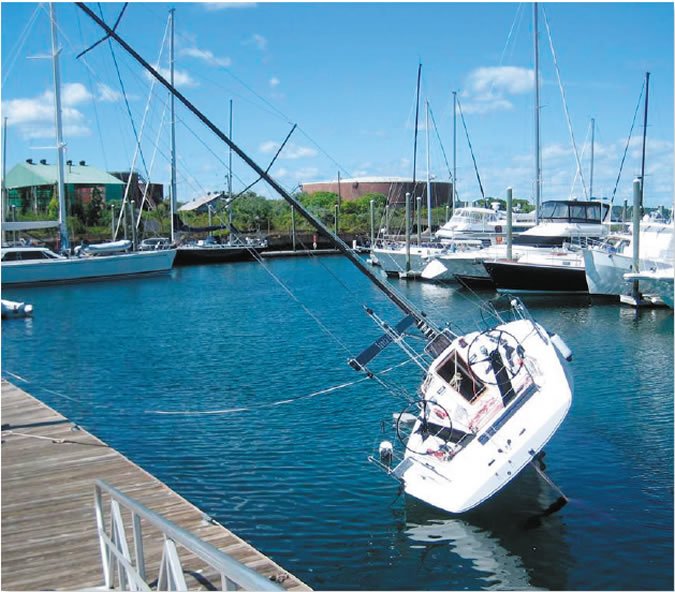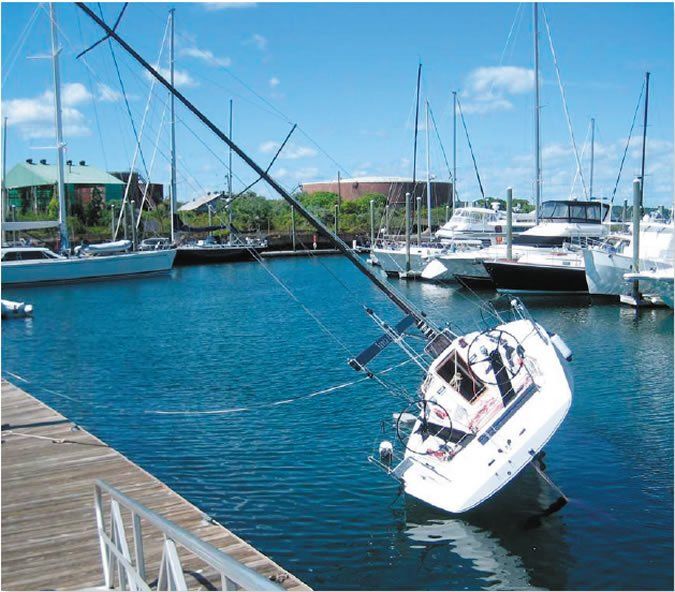Bottom photo courtesy of Selden Mast

The article Dissecting the Art of Staying Upright (see PS June 2015 online) was very timely for me, but I am struggling with how to apply it to real life and specific boats. How do I find information on the angle of vanishing stability for specific boats? Can you point me to other articles like yours where I can learn more?
Bob Pineau
Hunter 33
St. Clair Shores, Mich.
Unfortunately, stability (GZ) curves showing angle of vanishing stability (AVS), also known as the limit of positive stability (LPS), are not commonly published. Even yacht designers can find it hard to accurately quantify stability based solely on a boats dimensions and mass.
To find more information, our first stop would be the maker of the boat. Manufacturers of boats for export to Europe, or those built to race under the International Measurement System (IMS), should be able to provide a GZ curve, because this is an element in determining a boats stability index (STIX), which is one of the requirements for export to EU countries or for participating in an IMS event.
But even if you track down your boats GZ curve, it doesn’t necessarily reflect reality. Some curves may be mathematically derived from estimated measurements. Then there is the question of what elements were included in the analysis. Davits, radar arches, in-mast furlers, and any mast-mounted equipment-can nudge a borderline offshore boat (with an AVS less than 120), into the near-shore category.
Ultimately, the most accurate assessment involves getting the vessel inclined and wanded by an IMS measurer authorized by US Sailing (or comparable national body abroad). US Sailing (www.ussailing.org) can provide a list of authorized measurers who do this work.
In this process, the measurer applies a few hundred pounds of weight near the rail and starts to heel the vessel. He or she then extrapolates that heel data with the digitized shape of the hull and key weights and volumes to come up with an AVS. Bottom line: Greater than 120 is good, 110 to 115 marginal, less than 110 not appropriate offshore.
As for the STIX number: both the IMS and the European Union use this to categorize boats. Under an EU directive, Category A boats, those that are most capable of offshore work, must have a STIX number of 32 or higher. The number takes into account a variety of factors (location of hatches, for example), not just the AVS. Many experts feel that 32 is too low of a number for an Ocean rating. (A vessel with an AVS of 110 can still score a 32.)
Naval architect Dave Gerr wrote a succinct article in the Westlawn Institutes Newsletter that offers other ways to approximate a boats stability (www.westlawn.edu/news/WestlawnMasthead03_Sept07.pdf). Technical Editor Ralph Naranjos book, The Art of Seamanship, (www.practical-sailor.com/books) explores stability in more depth. Another good book is The Principles of Yacht Design by Lars Larsson and Rolf Eliasson, and Gerr explains stability in laymans terms in his excellent book, The Nature of Boats.






































STIX came from STOPS which itself CE from the RORC Triple S Numeral developed as a result of a recommendation in the 1979 Fastnet Report. To fully understand why STIX is as it is one has to understand the former rulers and the politics bearing on them.